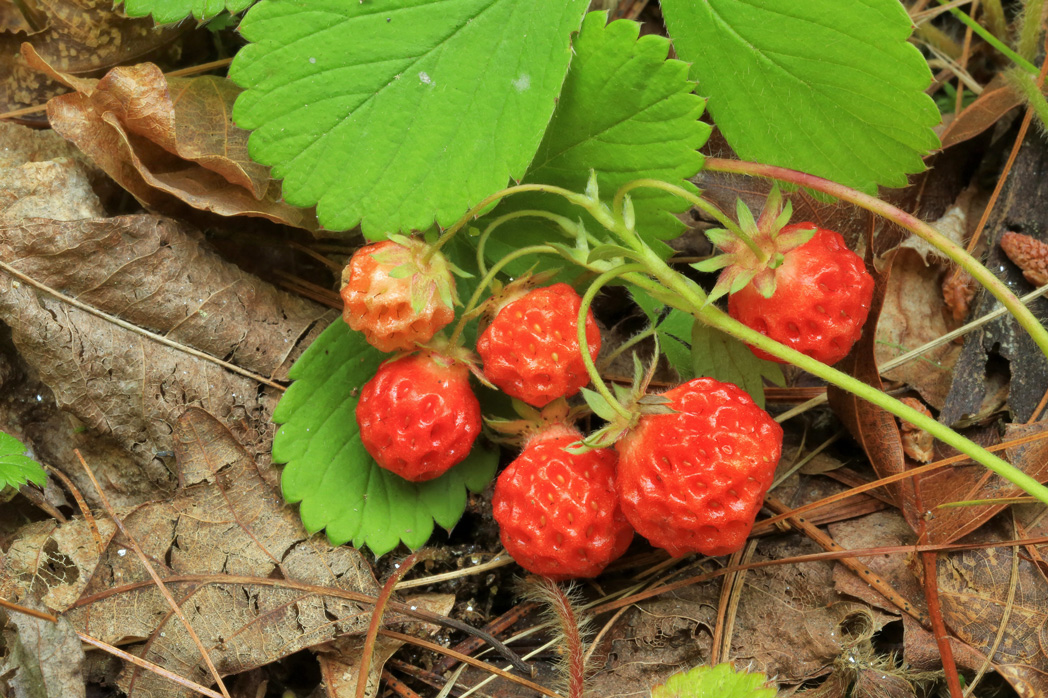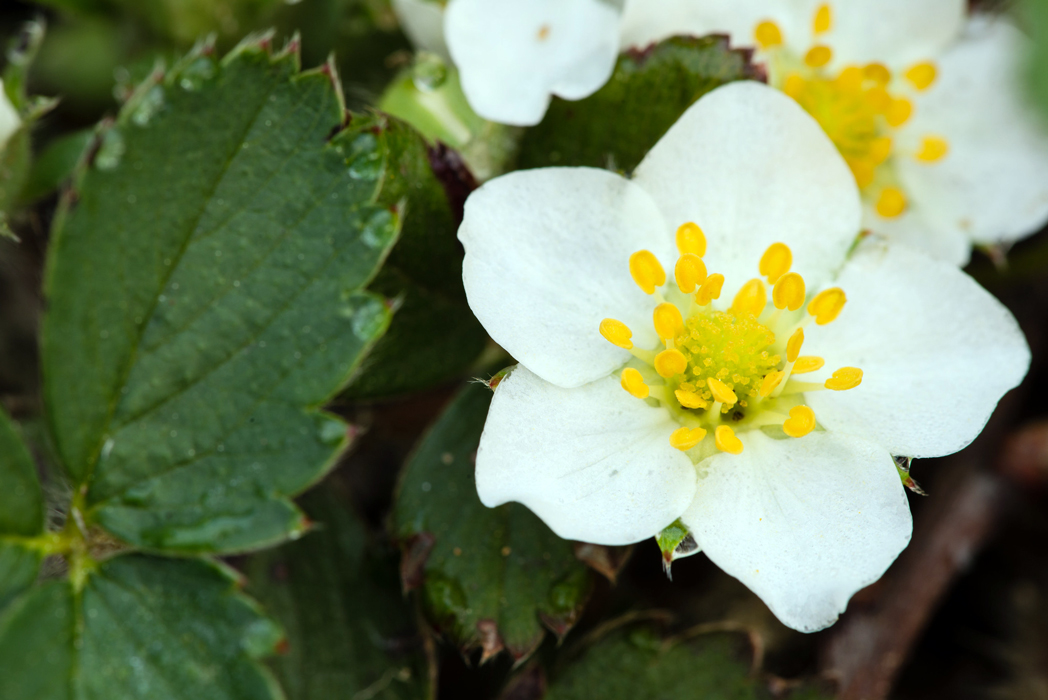Wild strawberry
Pictured above: Wild strawberry (Fragaria virginiana) by Keith Bradley. Click on terms for botanical definitions. View post as a PDF
Wild strawberry is a rare perennial wildflower that occurs throughout much of the eastern United States and Canada. In Florida, it occurs naturally only in open fields and woodland edges of Jackson and Leon counties. The plant is a larval host for the Gray hairstreak butterfly. Its spring flowers attract bees and butterflies, while its tiny summer fruits are a treat for humans and wildlife. They can be eaten right off the plant or collected and used in jams, jellies or pies. The leaves, which are high in Vitamin C, can be brewed to make tea.
Wild strawberry’s flowers have five overlapping white to pinkish-white petals. Both male and female parts are present. The pistil is greenish-yellow. Stamens are numerous and bear obvious bright-yellow anthers. Sepals are bright green and usually in numbers of 10. Leaves are trifoliate. Leaflets are deltate to obovate, thick, and slightly leathery with coarsely toothed margins. They may be bright green or bluish green and may have a glaucous surface. Pedicels, petioles and leaves are finely pubescent. Stems are smooth and procumbent. They produce many stolons that spread and form roots as they creep along the ground.
Despite its common name, the fruit is not a true berry. It is an aggregate accessory fruit, meaning the fleshy part is actually the plant’s receptacle, not its ovary; and it is made of many ovaries formed from a single flower. What appear to be “seeds” covering the outside of the fruit are, in fact, achenes, or individual ovaries, each containing a single seed. Mature fruits are bright red and ½–¾ inch in diameter at the widest point.

Wild strawberry (Fragaria virginiana) by Alan Cressler, Lady Bird Johnson Wildflower Center
The widely cultivated strawberry (F. x ananassa) is a hybrid of F. virginiana and Beach of Coastal strawberry (F. chiloensis), native to the Pacific coasts of North and South America. The genus name Fragaria is from the Latin fraga, meaning “strawberry.”
Family: Rosaceae (Rose family)
Native range: Jackson and Leon counties
To see where natural populations of Wild strawberry have been vouchered, visit florida.plantatlas.usf.edu.
Hardiness: Zones 8A–9A
Lifespan: Perennial
Soil: Dry to moist, well-drained sandy or loamy soil
Exposure: Full sun to partial shade
Growth habit: 4–8” tall and spreading
Propagation: Cuttings, division, occasionally by seed (may require stratification)
Garden tips: Wild strawberry may be used as a groundcover in open, sandy areas. It spreads readily on its own, so make sure you plant it where it can proliferate.
Plants are occasionally available from nurseries that specialize in Florida native plants. Visit www.PlantRealFlorida.org to find a nursery in your area.

